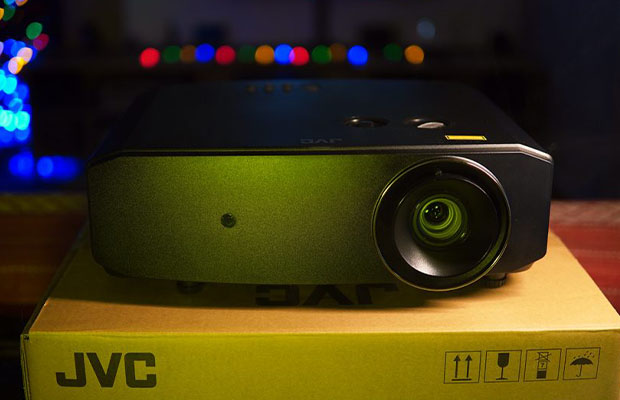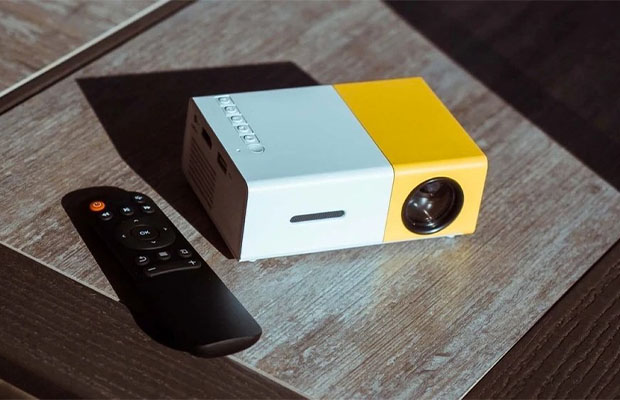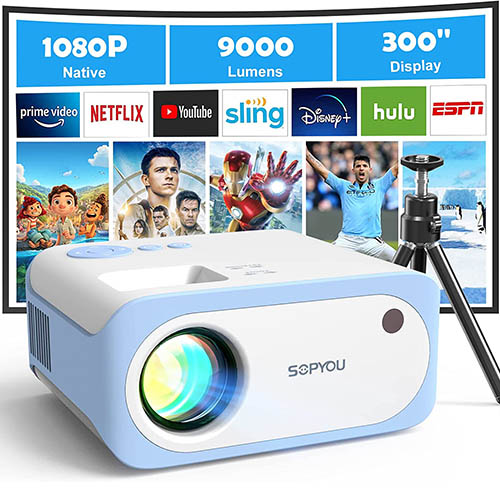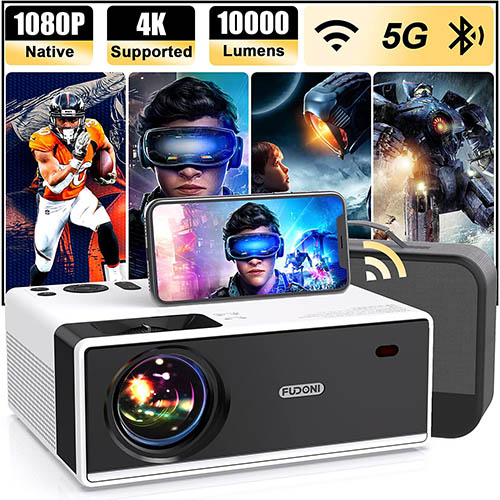These tiny 4K DLP projectors are, it seems, impossible to resist. The JVC, the projection’s queen, is not included.
JVC LX-NZ3 projector has a true 4K UHD resolution (3840 x 2160) and can be delivered by the HDR-compatible DLP home theater projector. With a suggested retail price of $3,699, its laser light engine and 4K resolution produce an excellent performance at a fair price.
The JVC LX-NZ3B, which is the same as the white model I reviewed, is also available. If you want to buy it, our review will be helpful for you!
Table of Contents
JVC LX-NZ3 Projector Overview
A projector with 3,000 lumens and a list price of $3,699 is the JVC LX-NZ3, which also features a 4K UHD resolution (3840 x 2160). The LX-NZ3 and the LX-UH1 are the only two DLP projectors in the JVC line-up; the majority of JVC projectors use D-ILA technologies, which have always provided excellent native contrast and black levels.
The only other laser projector JVC offers is the DLA-RS4500K, which has a suggested retail price of $29,999. Both models use JVC’s BLU-Escent ™ laser phosphor illumination, which has a rated life of 20,000 hours (in HIGH POWER Mode). Additionally, the LX-NZ3 has a lumen output of 3,000, which is more than enough to produce a vivid HDR image on a 120″ screen and a superb SDR image on larger screens.
Both HDR10 and HLG content are compatible with the LX-NZ3. A simplified version of JVC’s Auto Tone Mapping feature is also included with the LX-NZ3s. The Max CLL and Max FALL metadata that is embedded in HDR content can be used by the projector to automatically change the dark/bright levels in an effort to improve the HDR performance of the device.
Using the MAPPING LEVEL ADJUSTMENT, HDR’s appearance can be tailored to your preferences. Additionally, the LX-NZ3 has a brand-new HLG (Hybrid Log Gamma) picture mode to prepare users for future live HDR broadcasts.
The LX-NZ3 in JVC’s home theater projector lineup is a unicorn due to its 4K DLP chip and laser illumination.
Features Of JVC LX-NZ3 Projector
- Technology: Single Chip DLP
- Native Resolution: 4K UHD (3840 x 2160)
- Brightness (Manufacturer Claim): 3000 lumens
- Lamp Life: 20,000 Hours (High Power Mode)
- Contrast: ∞1 Dynamic Laser Dimming
- Zoom Lens Ratio: 1.6:1
- HDR10/HLG Compatible
- HDR Auto Tone Mapping
- 18Gbps/HDCP 2.2 HDMI Input
- Lens Shift: Yes
- Lamp Life: 20,000 Hours (High Power Mode)
- Weight: 13.89lb
- Warranty: 1-year Parts & Labor
Pros And Cons Of JVC LX-NZ3 Projector
Pros
- 3000 lumens (color and white)
- Laser Light Engine
- 20,000 Hour Lamp Life ((High Lamp Power)
- Native 4K UHD Resolution
- DLP chip delivers a sharp picture
- 4K HDCP 2.2 (18Gbps) for 4K@60p HDR playback
- Compatible with HDR10 and HLG
- Auto Tone Mapping to optimize HDR10 viewing
- Good 4K upscaling
- 1-year parts/labor warranty
Cons
- High Lamp Power mode could be quieter
- Black Level and Contrast could be better
- No motorized lens
- Not compatible with 3rd party anamorphic lenses
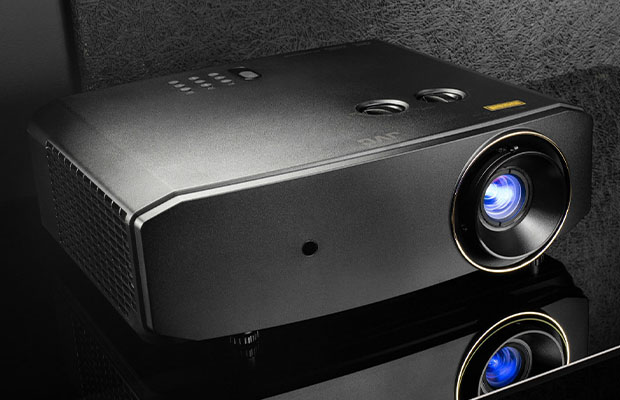
Brightness Review
The rated brightness of the JVC LX-NZ3 is 3,000 ANSI lumens. What percentage of the target of 3,000 ANSI lumens did the LX-NZ3 actually achieve? I set the projector’s Picture Mode to Dynamic which is its brightness mode and I took three or four readings between 15% and 20% from the lens’s center.
All the JVC LX-NZ3 picture modes were measured to be within a few hundred lumens of one another in HIGH lamp mode. The Natural and User modes measured just over 2,100 lumens at mid-zoom while still delivering fairly accurate out-the-box picture quality.
With Lamp Power set to Eco, brightness at mid zoom for the Natural mode still measured 1430 lumens. On a 100″ screen in a pitch-black environment, this brightness is more than adequate for viewing HDR and SDR content.
Calibration Notes Review
For the JVC LX-NZ3’s Best SDR Mode and Best HDR Mode calibrations, I did two calibrations. I set my SDR target gamma to 2.2 because I was using the projector in a room with some ambient light. The LX-NZ3 can easily produce more than enough brightness for SDR viewing on my 120” screen, so I set the Lamp Source Mode to Utilizing ECO will lower power and noise levels.
The LX-NZ3 lacks a color filter and cannot reproduce a wide color gamut, in contrast to JVC’s more expensive DILA-based home theater projectors. 97.6% of Rec709 was the gamut coverage I determined for the LX-NZ3.
Audible Noise Review
We don’t record audio noise. JVC lists the noise level at 29dB in Eco and 34dB in Normal. The noise level of the LX-NZ3 was comparable to other 4K DLP home theater projectors at its price point. While there are quieter home projectors when the Lamp Power is set to Eco, the noise level of the It was not obtrusive to hear LX-NZ3. When going from low to high, there is a noticeable increase in fan noise. When Lamp Power is set to Normal, the JVC DLA-NX7 that I reviewed earlier this year is significantly larger, costs over twice as much at retail, and isn’t as loud as the LX-NZ3, despite being noticeably louder.
Measurements Review
In terms of the range of gray gradations, his behavior outside of the box is a little peculiar; he wants his teasing in his sliders.
So, is its cinema mode before settings, strange behavior in gradations of 50% or more, I would say NZ3 is trying to give even more brightness to the image with the trick of low gamma.
Following the setting (oddly with too few RGB slider clicks), this happened.
Its color triangle is acceptable, with only a minor deviation in the secondary magenta and cyan colors that weren’t even necessary to correct.
If someone wants to make the most of their NZ3, I would say that they must set it up properly. Once they do, their image really soars and develops the cinematic texture that every home theater projector ought to have.
Impressions Review
All 4K DLPs that use the XPR module are known to be quite noisy, and this is because of how the system functions. The XPR (about which I’ll write a separate article soon) is essentially a crystal that can move slightly on its vertical and horizontal axes thanks to four electromagnets. Between the DMD chip and the lens, there is an electromagnet system that generates a distinctive noise that sounds somewhat like a high-frequency crackle.
The same sound is present in the NZ3 when the 4K e-shift feature is enabled in its menu (the majority of 4K DLD projectors do NOT have the option to stop the XPR running and view image net 1080p), but it is much less audible than it is on these 4K models. Of course, the implementation of XPR, which is specific to each model, plays a part, and the effectiveness of its mechanism varies from projector to projector.
A very high-quality XPR mechanism that is both relatively quiet and extremely accurate has been installed in JVC, as I had anticipated (since accuracy is a concern with these mechanisms, I will analyze it in great detail in a subsequent article).
The truth is, I didn’t test any 1080p hardware on the NZ3; instead, I gave it a straight 4K signal to gauge how it performed against the N5, which I had running almost simultaneously.
Observing the first scenes in the video I had seen in tens, not to mention the 100th 4K headlights, I discovered something I can now discuss in detail.
When using a laser light source, the 4K XPR module in DLP projectors with the 0.47″ DMD chip outperforms the corresponding traditional high-pressure lamp significantly. This has the following justification.
The photons must be introduced into the XPR as “evenly distributed” as possible in order for the deflection to be as accurate as possible. The XPR basically diverts each pixel to four different positions 240 times in the same second on the vertical and horizontal axes. I doubt that I could make it any clearer.
With regard to pixel displacement accuracy and how clearly they will reflect on the screen when compared to conventional projectors, this gives Laser 4K projectors that use XPR a leg up.
This is something that is obvious and is quickly discovered by an experienced eye; it has nothing to do with the lens or the material.
The NZ3 as a Laser 4K DLP projector makes the most of this advantage and captures its pixels on the screen with sharpness and clarity that are more comparable to Native 4K projectors than to cousins of the DLP 4K.
Not to scare you, but the average user who watches movies in their living room has trouble understanding this. However, it is clearly visible in a conflict between two projectors, one with a DLP laser and the other with a lamp.
Value Proposition Review
JVC introduced a 4K laser projector that retails for less than any of their lamp-based D-ILA models thanks to the use of a DLP chip. You would need to upgrade from the LX-NZ3 to the JVC DLA-NX5 for an additional $2,300 if you wanted a 4K DILA projector from JVC. A much higher native contrast is available with the DLA-NX5. In spaces or theaters with extremely low ambient light, this increase, in contrast, is apparent. The NX5 is also much quieter and includes a higher quality motorized lens
But compared to the DLA-NX5, the LX-NZ3’s brightness (3,000 lumens) is noticeably higher.
The LX-NZ3 might offer better value if you’re looking for a projector to view mostly SDR content in a room with more ambient light.
A good LCoS projector, such as the JVC DLA-NX5, has color fidelity, native contrast, and a deep black level that I have yet to find in a single-chip consumer 4K DLP projector. The DLA-NX5 is in a different league, so it is not even a fair fight. Do it if you can afford to upgrade from a 4K DLP projector to a 4K LCoS projector (JVC D-ILA or Sony SXRD).
The LX-NZ3 also has laser illumination, which does away with the requirement for projector bulb replacement. Convergence issues won’t ever arise with the LX-NZ3 because it is a single-chip DLP projector because there is nothing to converge. A decade of practically maintenance-free operation is guaranteed by the LX-NZ3 laser light engine and the DLP imager.
Projectors like the LS10500 ($7,999) from Epson are excellent 4K e-shift models. The advantages of a laser light engine are available, such as low maintenance and long lamp life. However, it costs twice as much, is twice as big, and lacks the LX-NZ3’s resolution and brightness.
One of the few home theater 4K DLP laser projectors in the LX-NZ3’s price range, the Optoma UHZ65, was discovered after a brief competitive search. Both the Optoma UHZ65 and JVC LX-NZ3 are 4K DLP laser devices with a 3000-lumen brightness rating. The UHZ65 uses a Texas Instruments 0.66-inch DLP chip, which thanks to its 2716 x 1518 microarray may deliver a sharper 4K image. However, the projector is larger and costs almost $900 more than the LX-NZ3 at retail.
4k And Full HD Optional Review
The matrix, or more specifically, the 0.47-inch chip-set made up of a Full HD-resolution DMD matrix and an XPR optical actuator that shifts the matrix image by half a pixel diagonally is the final key component that unites the novelty with the LX-UH1. A 4K image is created by combining them.
True, unlike the e-shift system used by JVC X-series projectors, here the micromirror matrix creates four half-frames and the actuator deflects them in two directions, but they do so even faster, so for the viewer, the image becomes not only a single one, but also more stable and clearer than when using e-shift. As a result, this projector shares an assembly with other DLP models.
However, if JVC did not play a role in the creation of the image, it would not be itself. In contrast to most models using the same chipset, this one allows you to disable optical conversion to display a Full-HD image. Everything is done to fulfill customer requests!
Any video can be upscaled to 4K resolution by the projector, and it does so fairly well. No matter how accurate the scaling algorithms are, they will still produce errors on some videos because the processor does draw some image details.
Everything works perfectly on a detailed Full-HD video, but on a compressed video that hasn’t been cleaned up of artifacts, the algorithm might just make them worse. For such a video, the “e-shift off” mode is intended, which prevents scaling and keeps a bad video at least watchable.
Customer Review On JVC LX-NZ3 Projector
- “The projector was easy to set up, but it takes several tries to get the zoom, left/right, and up/down settings just right because each change to one affects the other slightly. The picture quality is excellent, and there aren’t many settings to configure. I haven’t played many 4K Blu-Ray discs yet, but I haven’t had any issues. The only drawback is that it is extremely loud—I mean extremely loud. You may need to mount the fan behind a wall and cut a tiny hole for the lens to shine through because the fan makes a 747-like noise when it’s taking off. Although I can turn up the home theater volume, it will be difficult to hear in quiet scenes.”
- “I hadn’t used a project in a very long time, but I was very impressed. I actually used this projector outside with a Kodak inflatable screen, and I was very pleased with how easy it was to set up (just an HDMI connection was required) and how well the image itself looked. It had plenty of vibrant colors and excellent black levels. It was simple to get the picture perfectly centered on the screen thanks to the adjustable feet and image-position controls. Simply put, this is one reliable projector, and I couldn’t be more pleased with how well it performed.”
- “A really nice image that is reasonably small in size. Although the black levels aren’t as good as some of the non-DLP projectors with comparable prices, you’ll still value the extra brightness in spaces without complete lighting control. “
- “This projector is truly amazing. Although it is located in the basement, our media room has no curtains covering the exterior windows. We were replacing a high-end Panasonic with a defective LCD. There is ambient light here even at night. Additionally, we have two sizable Newfoundlands that generate a lot of dust. “
Conclusion
JVC is on the right track by offering projectors in a range of price points and releasing products for use with various systems and viewing environments. She now possesses both pricey, ultimatum, in contrast, models and equipment that is better suited to actual settings than to those that have been specially prepared.
The HDR image actually improved noticeably with this version of AUTO TONE MAPPING. If you are currently thinking about purchasing a project, we would say that is a good option.
Read More: Bold Projector Review

